Beyond What Drifts Us Apart is a long-term art project conceptualised and curated by the acclaimed Maltese curator, Elyse Tonna. The 2024 edition took place in and around Gozo’s Dwejra Tower, which proved to be an abundant source of inspiration for this year’s selection of both local and international, interdisciplinary artists. The exhibit was open to the public for a week through a variety of workshops and performances.
The Dwejra Tower in Gozo has always been celebrated for its historical value as well as the rich natural landscape that surrounds it. These assets made it the prime candidate for Elyse Tonna’s second subject in her art project series: Beyond What Drifts Us Apart (BWDUA). The art project as a whole centres around the various coastal towers on the Maltese Islands and the environment they form part of. In 2023, the focus was on the Qalet Marku Tower at Baħar iċ-Ċagħaq and featured six artists working in a variety of disciplines. This diversity was made possible through the involvement of MagiC Carpets, which is an EU platform that aims to overlap the arts with non-art communities through residency-based projects. This year, a new but equally diverse group was chosen to create site-specific interventions around the Dwejra Tower and eventually open their work to the public in a week of exhibits, workshops, and performances. THINK had the pleasure of visiting on the project’s opening day, as well as sitting down with Tonna to discuss her work.
The Curator and Mastermind
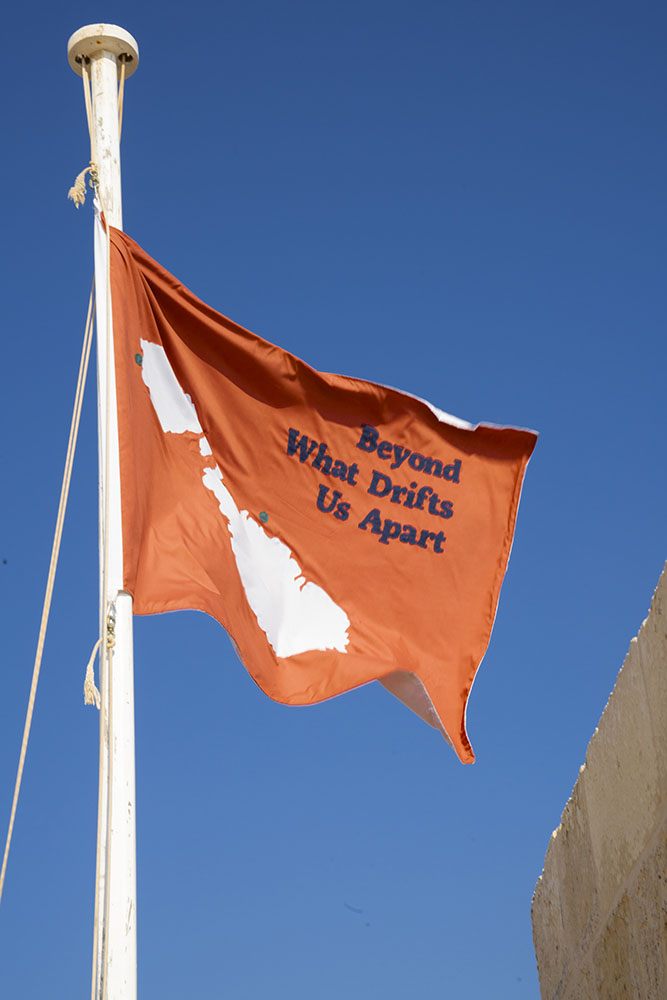
Photo by Chelsea Muscat
Tonna has worked as a curator for several projects, both local and abroad. Her most notable achievement came just a few months ago, when she worked with Matthew Attard to represent Malta at the 2024 Venice Biennale, which as described in a previous THINK article, ‘is to the Arts what the Olympics is to Sports’. As if that wasn’t an achievement in and of itself, Tonna was also the youngest and first Maltese female curator to be part of the Maltese pavilion. Tonna describes her experience as fulfilling, and also encouraging from an artistic perspective. It affirmed that there is space and opportunities for local artists to get the recognition they deserve. This space also brought with it a strong sense of responsibility, a pressure that Tonna and the rest of her team felt throughout the entire process.
‘I can’t work without artists, without communities. In the long run curating is a process that relies on sharing and giving back’ Furthering the importance of connection, Tonna explains how her work is never separate from the artistic process by any means, but in fact is deeply integrated with it. As a curator, she cannot challenge the artists and push them towards a wider vision unless she knows their work inside out. Before her illustrious career, Tonna was a UM student, a time she recalls fondly, and says ‘nothing you ever learn goes to waste’. Tonna obtained a Bachelor’s in Architecture and a Master’s in Cultural Heritage from the University. The main skills these courses gave her were stamina and a love for research and detail. These ultimately helped her create a project as expansive as BWDUA.
What It’s All About
When asked about her favourite project, Tonna promptly replies, ‘This one’, without hesitation. She elaborates that BWDUA has become a lifetime mission with a lot of personal significance, ‘it is everything that is me’ and she hopes to keep the project going until she has worked on every coastal tower on the Maltese islands. It’s worth noting that anyone who didn’t have the opportunity to visit this year’s edition need not worry, Tonna is already looking for her next tower.
Her fascination with these buildings started when she was young, observing the Qalet Marku tower that was visible from her childhood home. Tonna wanted to discover the non-linear narratives about such structures that don’t traditionally make it into museums and history books. Each tower has a different story to tell, and Tonna cites a few examples; one has been turned into a museum, another has a hotel built around it, and the list goes on and on. The diversity of these stories requires Tonna and the artists of BWDUA to adapt even at the most basic level. She explains how the team that worked on last year’s project had to face wind, rain and other inclement weather. Sitting with sunglasses in the mid-July sun, I see what she means.
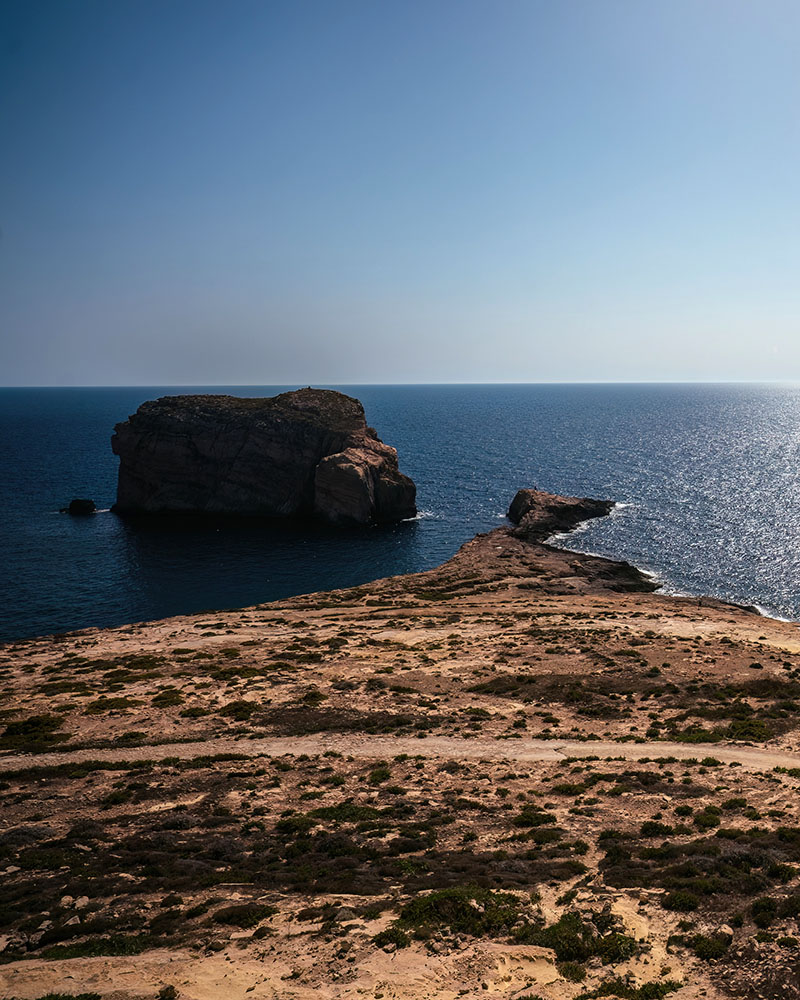
Photo by Elisa von Brockdorff
Tonna says this project ‘is not about reaching conclusions’, but rather about adopting a new way of thinking, turning our focus not towards the anthropocentric ‘defensive towers’, but rather to the nature that has been protecting us for much longer. She wants the visitors of BWDUA to ask, ‘How can we as humans position ourselves into the ‘mind’ of the non-human, to be sensitive to the changes happening around us the way they are, the way they have to be to survive?’ Walking around the various exhibits on opening day, I’d say this aim was achieved. One gets the sense that the artists have familiarised themselves with their natural subjects so completely that their work comes across as a collaboration. It is clear that they create from a deep sense of respect, a willingness to listen and be inspired by a force bigger than the artistic self.
The Art and Artists
The first thing visitors spot when entering the tower is a tall sculpture made of interwoven reeds. The sculpture by Portuguese artist Martinha Maia is named ‘Sansuna’, after the legend of the giant woman who carried the rocks of Ġgantija. The use of an invasive species and the reference to the cultural legend emphasise the project’s aim of asking what our place is as humans who live and interact within an ecosystem, creating myths and beliefs that are inevitably connected to the natural world. This sense of responsibility is also present in the work of artist Issac Warrington, who studies the fossils and rock formations around Dwejra.
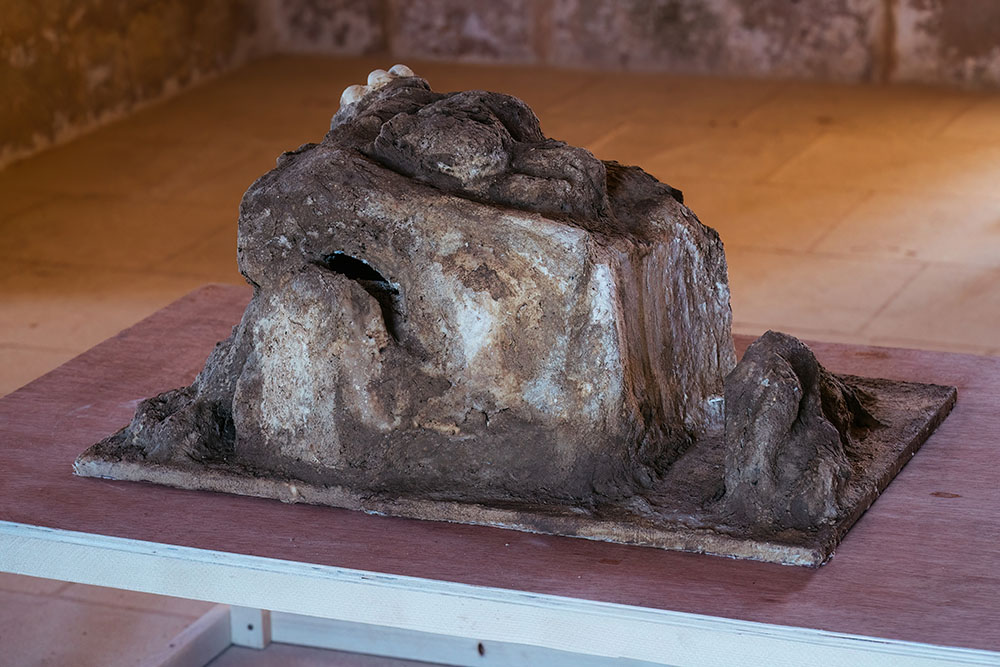
Photo by Elisa von Brockdorff
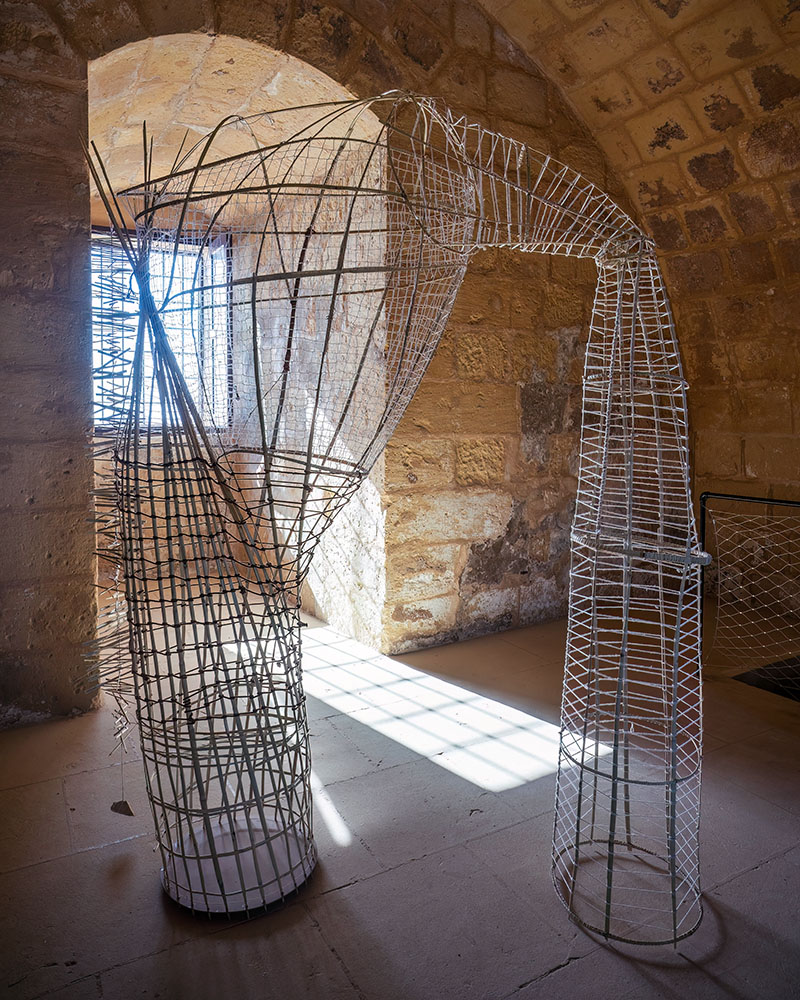
Photo by Elisa von Brockdorff
Tonna talks about some of Warrington’s observations, ‘His project shows that even just by walking along the shore, every step crushes small shells and fossils that have been forming over incredibly long periods of time.’ Anyone with a basic knowledge of the Anthropocene will recall how geological records show that the existence of humans has been recorded through drastic physical changes on the surface of Earth, not just through rock erosion but also through more consequential chemical changes in soil and glacial formation. The point of these observations is not to say that humans should stay away from sites like Dwejra, but rather to make us aware of the impact that we generate.
Justyna Olszewska is a Polish artist and astronomer whose work in BWDUA highlights the issue of light pollution that exists even in a dark sky heritage area like Dwejra. Her work, a slide projection of images of the night sky, was featured on the lower level of the tower. The projection was accompanied by recordings by sound artist Jamie Barbara, who sonifies the otherwise inaudible frequencies of bats that live near the tower. Both artists also offered workshops that shared how they observed and recorded these natural elements.
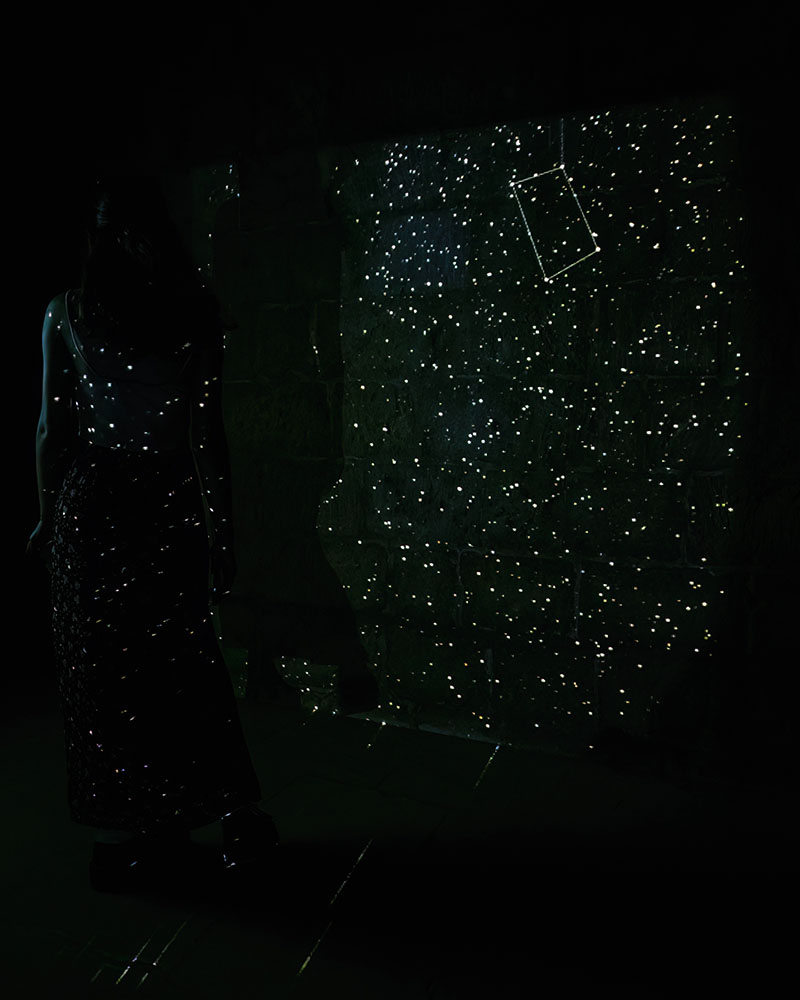
Photo by Elisa von Brockdorff
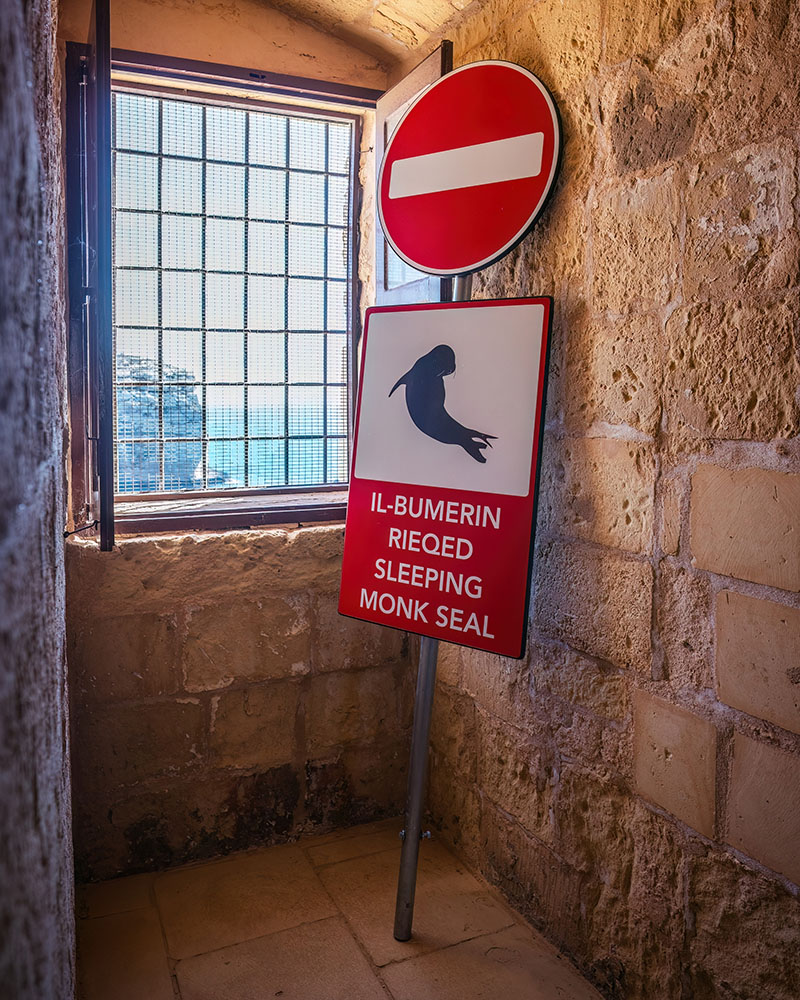
Photo by Elisa von Brockdorff
The high point of the opening came at the end of the day, when I, along with the other visitors, were led down a path behind the tower to watch a performance by the artist Keith Bonnici. The performance, titled ‘Rest Island’, consisted of Bonnici laying on a small floating platform (shaped as Dwejra’s Fungus Rock) while it gently rocked on the waves. One might imagine it would feel awkward to sit in silence with strangers watching a grown man seemingly float out to sea, but like the project as a whole, it exuded a sense of peace and stillness. I couldn’t help but note how Bonnici’s performance in particular seemed to encapsulate the child-like sensitivity and curiosity that drove Tonna to create such a unique and wonderful project in the first place. Bonnici was not the only artist who performed a piece. Florinda Camilleri used her skills as a life-long contemporary dancer to create a dance in tribute to the often disregarded but extremely important Posidonia oceanica, more commonly known as seaweed. The movements of the piece (appropriately titled Għalik Posidonia) are taken from traditional Gozitan dances and involve the participation of the Ta’ Ċangura Folk Group of San Lawrenz. A brief clip of the dance can be found here. Camilleri’s piece relates heavily to the work of the other artists in connecting the historically human culture of Dwejra to the contemporary issues of the natural world, showing the public that the movements of the two, both literal and metaphorical, are more similar than we think. BWDUA projects a new way of thinking not just about the environment and our place in it as people but also about art’s function in society as a whole. It serves as proof that art can actively improve our lives, even by simply making us aware of narratives that would otherwise go unobserved.
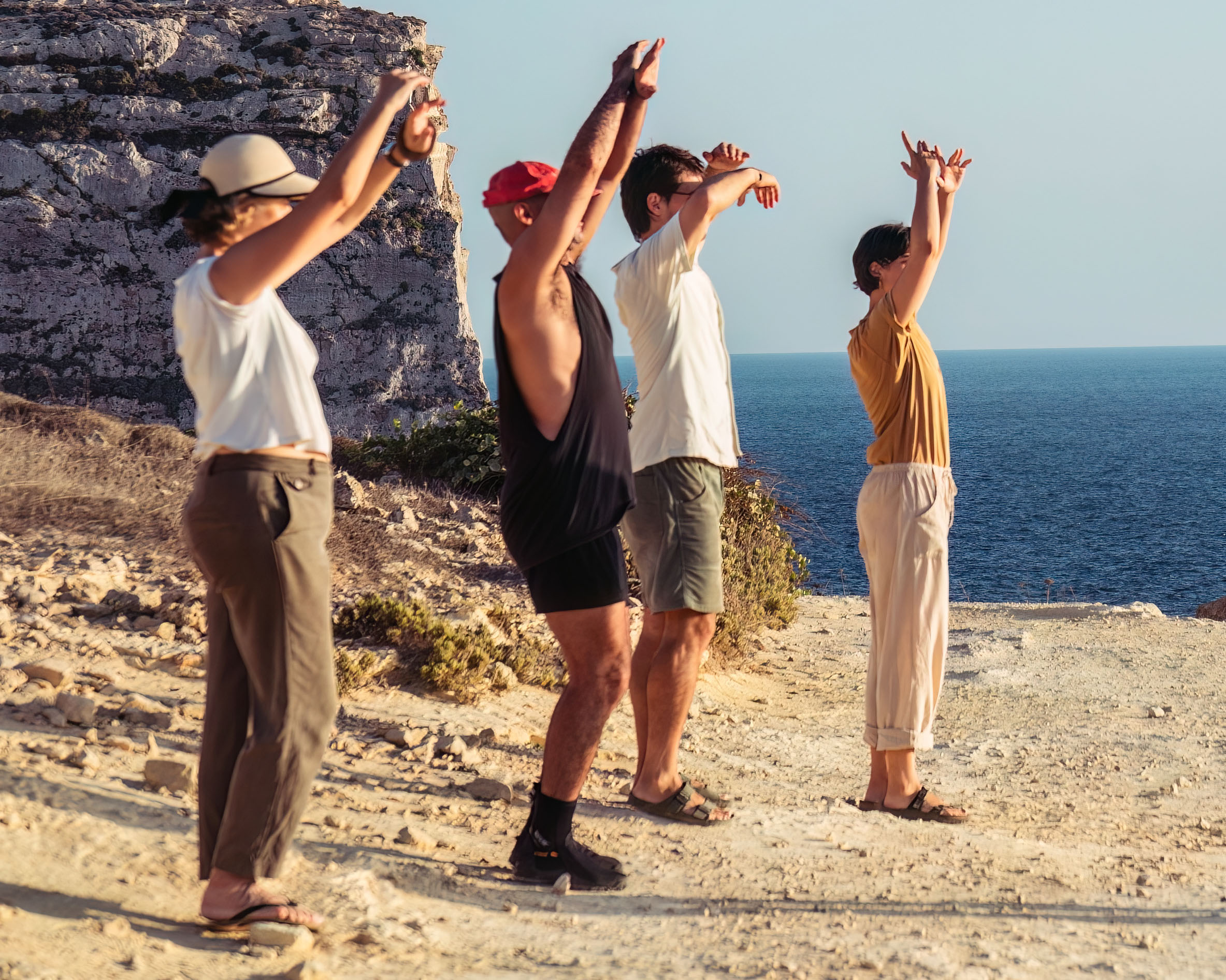
Photo by Elisa von Brockdorff
Beyond What Drifts Us Apart is a collaboration with the Istanbul-based Mahalla Festival and Unfinished Art Space, forming part of the MagiC Carpets Platform, co-funded by the Creative Europe programme, and supported by Arts Council Malta.
The project at Dwejra was also made possible with the support of Din l-Art Ħelwa, the Environment Resources Authority, 2point3, Geġwiġija, Ta’ Ċangura San Lawrenz Folk Group, Dwejra Marine Environmental Education Centre, Gozo Bat Initiative and San Lawrenz Local Council, among others.

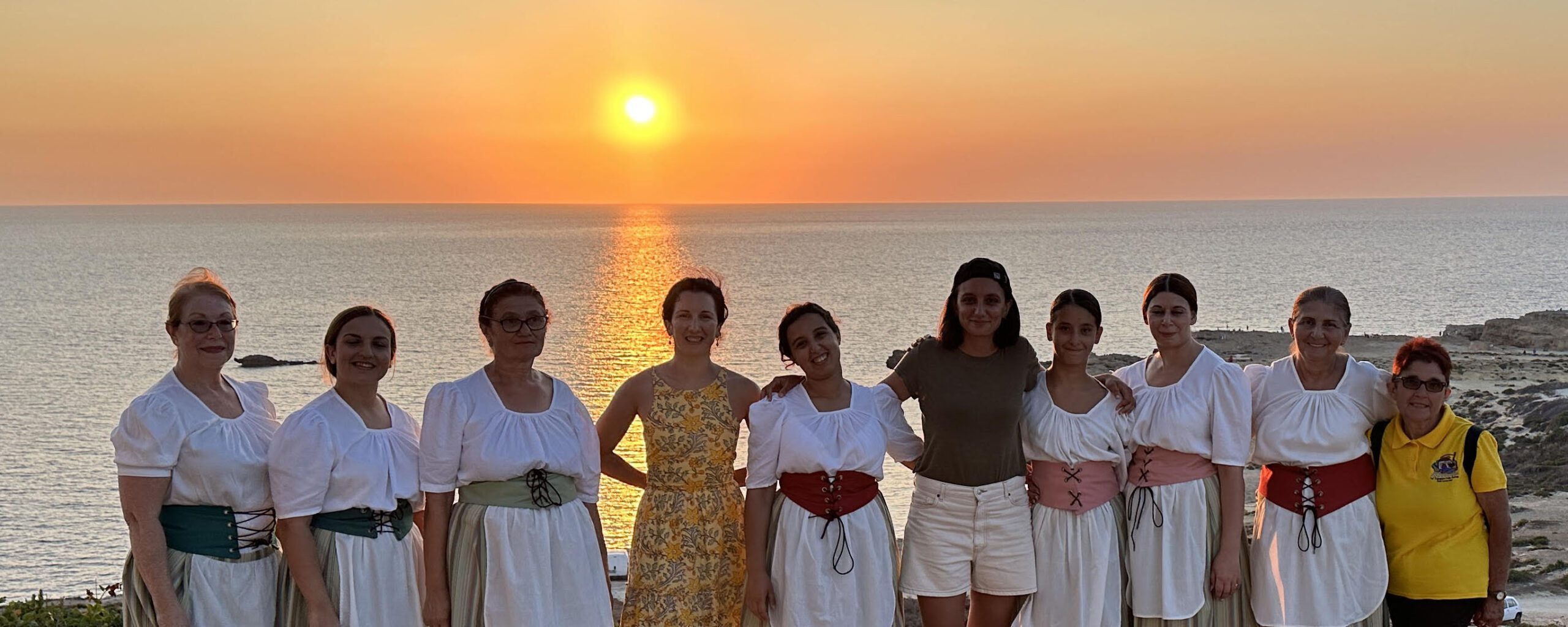



Comments are closed for this article!